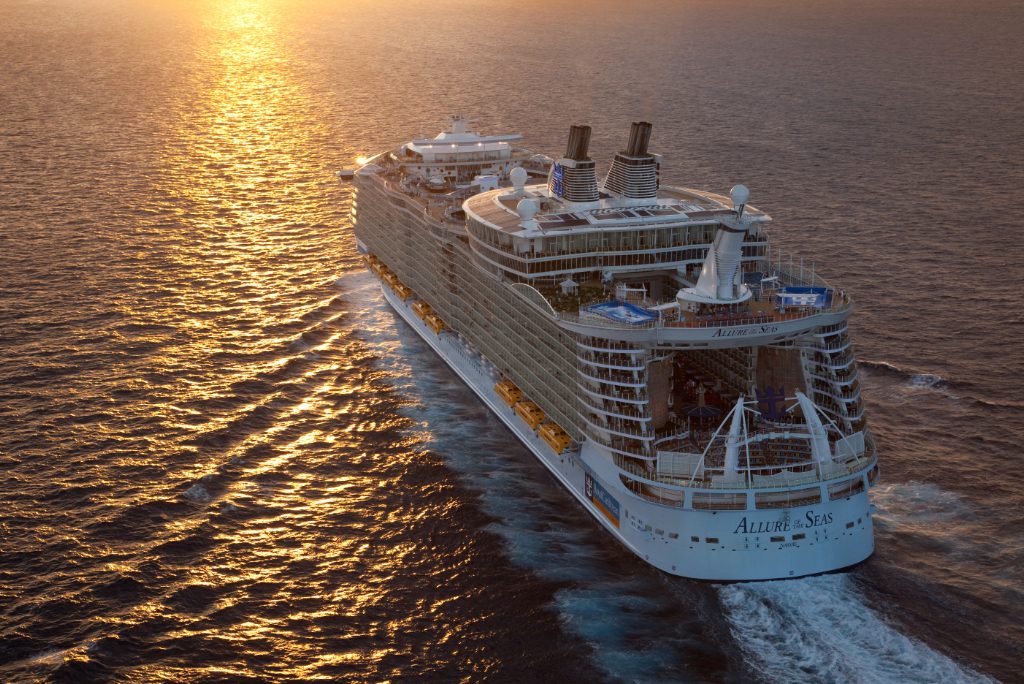Skift Take
"Just when you thought it was safe to go back into the water" was the tag line for the movie Jaws 2. But the words may apply to the cruise industry now, given surging infections in cities worldwide. Yet, if you've spent any time with frequent cruise-goers, you know they'll be back booking as soon as it's safe.
Royal Caribbean International is one of the world’s largest cruise companies, but it transported only 1,230 passengers in the three months ending September 30. The pandemic has devastated a company that, in the same period a year ago, carried 1,728,997 passengers.
With only a trickle of revenue but many bills, Royal Caribbean has joined its peer companies Carnival and Norwegian Cruise Line in slashing costs to service costly borrowings and stay afloat until cruise ships can roam the seas again. The companies had hoped for a 2021 rebound, but a surge in coronavirus infections worldwide has prompted companies to push back plans to restart limited sailing.
“We’re beginning to see the light at the end of the tunnel,” said Richard Fain, chairman and CEO of Royal Caribbean International during an earnings call Thursday. “That light needs new batteries, but the light is clearly visible.”
Fain’s comments came shortly ahead of an expected announcement from the Centers for Disease Control and Prevention about whether it would extend its ban on cruise sailings in the U.S. beyond October 31. When analysts asked about this, executives said they couldn’t comment.
“We all see a pathway back to resuming operations: slower than I would wish but faster than many are assuming,” Fain said. “We really do believe that it is possible to make it so that you are safer on a cruise ship than you are on Main Street.”
An analyst asked if Royal Caribbean executives have spoken with the White House, which has, according to media reports, been pushing for a return to sailing.
Fain dodged the question, saying he will talk to anyone about this issue, but his private conversations are private. He said he hoped authorities would decide the question based on the science.
Fain argued that the evidence shows that health protocols could make cruising safe. The protocols, produced last month in conjunction with other cruise lines and scientific experts, include testing all passengers before sailings and the proper isolation of passengers who become ill onboard.
Trial sailings in Europe have had a low incidence of infections and no known superspreader events, Fain noted. Since the spring lockdowns lifted, Royal Caribbean has had 70 sailings, covering TUI Cruises, Hapag Lloyd, and Silversea, and other cruise lines have also had trial sailings.
“When there have been instances, and there will be because there are everywhere, we are seeing both an ability to limit the spread on to the ship, we’re seeing an ability to deal with incidents when they occur to keep it from becoming an outbreak,” Fain said.
Analysts asked Royal Caribbean executives if they thought the results of the U.S. presidential election might have an impact on the return to sailing but executives declined to say.
Sunk Costs
Royal Caribbean posted a net loss of $1.34 billion in the third quarter, compared to last year’s net income, a measure of profit, of $883 million. The company estimated its cash burn rate remains in line with its previously estimated range of between $250 million to $290 million a month.
Ships on the few dozen European sailings this year have been operating “at about breakeven” on a ship-specific basis as a “kind of direct profit” that excludes some “fixed costs,” said Jason Liberty, executive vice president and chief financial officer.
Patient and Methodical
In December, one of the company’s 53 ships, Quantum of the Seas, will resume cruising from Singapore. The company said demand for tickets was “triple the demand” it was expecting, though it didn’t give numbers.
The rollout elsewhere depends on announcements from authorities.
“Deployment in the spring is expected to be highly focused on short sailings from key dry markets in both the U.S. and Asia-Pacific regions,” said Liberty said. “We will also make the most out of our incredible private destinations in the Bahamas: Perfect Day and CocoCay.”
The company’s current expectations are that its fleet will be “back up and running by 2022 and 2023,” with capacity likely to be higher than in 2019 because of new ships it will put into service.
Consumer demand signals are conflicting. About half of the guests booked on sailings the company canceled this year have opted to apply the money toward future sailings rather than seek cash refunds. Summer 2021 bookings are filling up, the company said.
The Daily Newsletter
Our daily coverage of the global travel industry. Written by editors and analysts from across Skift’s brands.
Have a confidential tip for Skift? Get in touch
Tags: cruises, cruising, earnings, royal caribbean, royal caribbean cruises
Photo credit: From Central Park to the Pool and Sports Zone with FlowRider surf simulators and a zip line, Allure of the Seas is one of Royal Caribbean’s Oasis-class cruise ships. Royal Caribbean International
